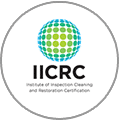Did you know that up to 50% of the air inside your home can come from below? This air brings mold spores, musty smells, and humidity. Moisture under a home can weaken structures, harm health, and raise utility bills. It’s crucial to tackle moisture issues to avoid these problems.
A moisture barrier under houses is now more important than ever. Mold and pests love damp places. For example, dust mites in humid crawl spaces can cause allergies and asthma. Mold spores in the air lower indoor quality and decrease property value.
High humidity in crawl spaces attracts pests and hikes energy bills by 15-25%. Visible signs like uneven floors are just the start of moisture damage.
It’s key to find and fix moisture sources like leaks or condensation. Steps like regrading yards and installing drain tiles help protect your home. Quick action is needed to avoid damage and ensure a safe home.
Common Causes of Moisture Under a House
It’s important to know why moisture builds up under houses. About 15 percent of homes in the U.S. have crawl spaces. These areas can lead to structural damage and health problems if not managed.
Several factors can cause moisture in crawl spaces:
- Improper Grading: Poor site grading lets water pool near the foundation. This water can then seep into the crawl space.
- Below-Grade Crawl Spaces: Crawl spaces below ground level are more likely to get water. This is especially true during heavy rains or snow melts.
- Clogged Gutters: Blocked gutters cause water to spill over, hitting the foundation. This water then seeps into the crawl space.
- Plumbing Issues: Leaks from pipes and fixtures inside or near the crawl space add a lot of moisture. These leaks are often not noticed, making the problem worse over time.
Fixing these problems is key to keeping a house dry. Taking steps to control moisture in crawl spaces can prevent many issues. These include warped floors, musty smells, and higher energy bills.
Here are some ways to tackle these problems:
- Proper Site Grading: Make sure the soil slopes away from the foundation.
- Gutter Maintenance: Clean gutters regularly and use downspout extensions to keep water away from the house.
- Drainage Systems: Install a good drainage system around the house to handle extra water.
- Prompt Repairs: Fix plumbing leaks quickly to stop long-term moisture issues.
- Encapsulation: Seal vents and cover the crawl space floor and walls with a vapor-retarding barrier.
Signs of Moisture Problems in Crawl Spaces
It’s important for homeowners to spot moisture under their houses early. A musty smell means mold and mildew are growing. Also, too much humidity inside can be a sign of poor ventilation or water leaks.
Pests like termites, mosquitoes, and rodents are attracted to moisture. They can harm your home’s structure and health. Sagging floors are another warning sign, as dampness weakens wood.
- Musty odors
- High indoor humidity
- Pest infestations
- Sagging floors
- Spiked energy bills
High energy bills can also indicate moisture problems. Damp conditions make HVAC systems work harder, raising energy costs.
Acting fast to address moisture under your house is key. It keeps your home safe and healthy. Quick action can avoid costly repairs and protect your home’s integrity for years.
Is Moisture Under a House Bad?
Moisture under a house is a big problem. It can harm the house’s structure and the health of those living there. Dampness can cause high energy bills, health issues from mold, and pests in the crawlspace. It can also warp floors.
Mold growth is a major concern in damp crawl spaces. Mold spores can harm health and scare off buyers. High humidity can cause wood to rot. Keeping humidity levels around 55% is key.
Fixing moisture problems is vital. Steps include finding the source of water, removing it, and installing systems like French drains and sump pumps. Replacing insulation and using vapor barriers are also important. Encapsulation can improve air quality and home value.
Conclusion
Dealing with moisture under a house is key for a healthy home and its structure. Issues like mold, wood rot, and pests come from too much moisture. This can harm your home’s safety and value.
Signs of water problems include standing water, mold smell, and discolored water. So, finding ways to control moisture is vital.
Experts like Reliable Restoration of Northwest Georgia can help a lot. They find the cause of moisture issues and fix them. This includes fixing grading, gutters, and foundation problems.
They also check for plumbing leaks. Remember, a moisture barrier in crawl spaces is important to keep moisture out.
Regular checks and upkeep can stop small problems from getting big. Solutions like drainage systems, encapsulation, and dehumidifiers work well. These steps help keep moisture under control for a long time.
By being proactive, like watching water use and checking plumbing, you can keep your crawl space dry. This means no mold or pests.






